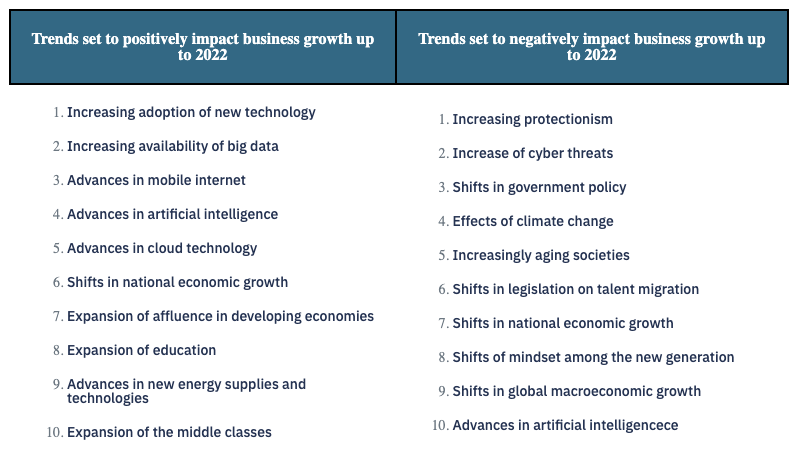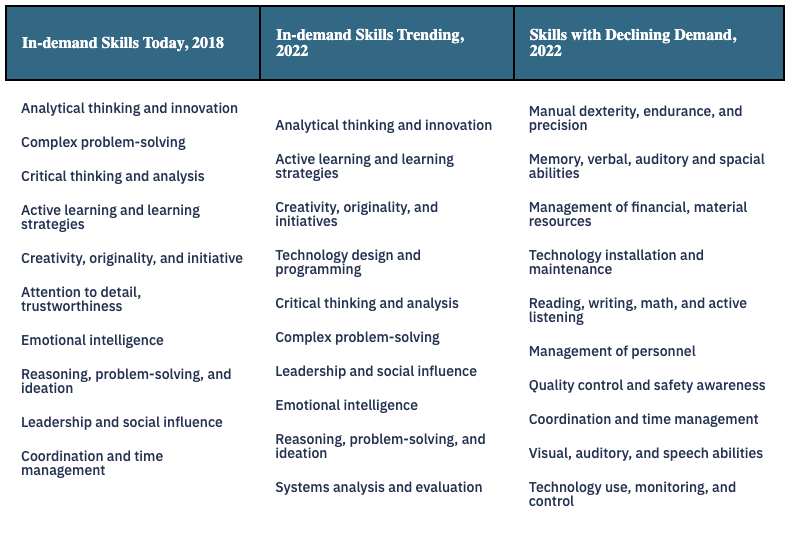Your Job, Business, And Lifestyle Post-COVID-19
Unplanned For
31 December 2019 was when Wuhan Municipal Health Commission identified the cluster of pneumonia cases in Hubei Province, which became the Covid-19 we know today. By late April 2020, CNN reported that the United States of America had surpassed 1 million Covid-19 cases. As of early May 2020, The Guardian reported that the virus had infected approximately 3.5 million of the world’s population.
To break this contagious chain, China was the first country to implement lockdown, forcing its citizens to quarantine themselves and adapt to a new working culture: Work From Home. It was not as easy as it sounded due to (e.g., technological) roadblocks in its adaptation. Nonetheless, some poorly affected businesses led to an increased unemployment rate. Malaysia follows suit in March 2020, where the country underwent full lockdown and was followed by a restricted lockdown period until December 2020.
This has raised several “what if’s” questions like: “What if another pandemic hits in the future? Will I be ready?” or “What if my job is no longer relevant in the post-Covid 19 era?”
In Malaysia, we encounter another MCO in January 2021 as the positive infected cases climbed from hundreds to over 3,000 cases per day. The impact of this second round of lockdown is yet to be seen and could be predicted to slow the economy down and cause more disruptions to the workplace. Many were retrenched, especially in the SME sector, as companies had to close as they can no longer afford to pay mortgages and wages.
Here, we explore how this pandemic has changed how we work, affected jobs, and set expectations on skills.
Remote Work Everywhere
Since the world has seen how highly contagious the disease is, authorities from all over the world had to impose some regulations to curb individuals’ free movement in hopes to “flatten the curve.” The most widely adopted method was to implement nationwide lockdowns by limiting travel distances and hours. The people were encouraged to remain in their homes and only leave if necessary (e.g., for supply runs).
Due to such enforcement, most businesses were forced to stop operating “as usual” almost overnight, except for health and public services. At this point in reading, many of you have adjusted to the “new normal”—no more traditional activities such as seeing clients in coffee shops, having lunch with colleagues, etc.
Subsequently, the way we live has changed, but so did the way we work. To sum it all up, we add the term “virtual” before any interaction we would have had with our colleagues if Covid-19 never hit us hard enough. No more were the days we present in front of a room of people where having their facial cues may have added or subtracted your performance. Instead, most of our days now go about – too many times – “can everyone hear me / see my screen?”
Tools such as Microsoft Teams have suddenly surged in popularity not only for their ability to conduct virtual meetings but also to facilitate collaborative work. According to Digitaltrends, video calls on Teams have since shot up by 1000% (yes, you read right) compared to times before this pandemic.
Telegram recorded a high of 25 million additional users within three days in January 2021. More people who had to adapt to digitalization started to realize and know the importance of privacy and security. Organizations will need to take cybersecurity seriously moving forward. They need to figure out ways to utilize the data they have collected during this digitization and use it as a weapon in their quest to drive business growth.
Given the situation, some have learned to move away from endless email threads with copies of outdated data and embraced working off live files, while some are still struggling to adapt to changes. Note that this is only the beginning of how our working culture had revolutionized. An unexpected driving force behind the transition in how we (will) work, what about jobs’ relevance? What about the jobs that seem to have been sentenced to pass with the pre-Covid days?
Aftermath of Jobs
NewStraitsTimes reported that approximately 46% of self-employed lost their jobs, with agriculture and service sectors hit the hardest. The agriculture and service sectors need human intervention or human labour to run their businesses; they cannot produce enough revenue to sustain without it. But what if tasks like watering plants, harvesting, food serving, bus and taxi drivers, and other labour jobs were to be automated by robots and Artificial Intelligence(AI)?
Emerging technologies could be a game-changer to those sectors. According to the ‘Future of Jobs Survey 2018’ by the World Economic Forum, there are four technological advances – ubiquitous high-speed mobile internet, AI, widespread big data analytics, and cloud technology. These technologies will dominate 2018-2022; other trends are available in Figure 1.

Figure 1: Trend set to impact business growth positively/negatively up to 2022.
Source: Future of Jobs Survey 2018 by World Economic Forum.
Looking at Figure 1 in-depth, implementing this ‘new’ set of knowledge will not only allow affected sectors to sustain and optimize their businesses, but it will also put the whole ecosystem into a transition phase of “job shift.”
For example, the application of AI within the agriculture sector will reduce the cost and worries surrounding the process of fertilization.
With the help of AI, fertilizing the crops can be handled on time without human intervention. This allows owners to channel human labour to other areas of the business, improving resource utilization.
Skills to be Gone and Welcomed
Having mentioned how working culture may change and that specific jobs have already been affected by the pandemic, ‘skills’ would naturally be the (not-so) secret recipe in the mix. Whenever it comes to fitting a person to a job, the arsenal that a person possess has always been held at its spot.
That is why you and I would list down skills like articulacy in Microsoft Word, the Java program, etc., on our resumés or LinkedIn profiles. Not because universities told their students to do so, but because they understand what potential employers would seek when hiring. As per LinkedIn’s Research late last year, about 90% of hirers emphasized skill assessment results for candidate evaluation as it saves time and increases fairness in the hiring process.
Besides that, the ‘skills’ mentioned earlier are mainly known as ‘hard skills.’ In today’s work environment, soft skills such as creativity, critical thinking, problem-solving, and communication have grown to be more desired than ever. To quickly distinguish the two, in any work process (e.g., projects or tasks), hard skills would ensure output, whereas soft skills determine the quality of input.
The famous saying of “garbage in, garbage out” in analytics applies here as well; without proper input, ultimate results can only be sub-par. The automation of work that is said to be “replacing humans” refers to the replaceable hard skills, especially those requiring repetition and accuracy.
In-demand Skills Today, 2018In-demand Skills Trending, 2022 Skills with Declining Demand, 2022

Figure 2: Comparing skills demand, 2018 vs 2022, top ten
Source: Future of Jobs Survey 2018 by World Economic Forum.
By today’s standards, when technology has come so far (and it only gets further). “The only constant in life changes,” said Heraclitus during a time when people could never have imagined the world we live in now.
According to the survey’s results above, a glance would provide the sense that skills in demand involve critical/analytical thinking and innovation. On the other hand, those who may be “out of fashion” are more mundane, repetitive, and manual.
Despite that, one should not think that they can pass on having such skills, but rather think of them as essentials or the bare minimum to be optimally functional, if not as rare talents in the distant future – think tailor-made clothing vs. off-the-rack clothing.
Google the phrase “data is the new oil,” and you will find plenty of reference points describing how a 21st-century employee would be most valuable if he/she possesses the ability to work with data efficiently. As more organizations understand the importance of data mining across their various functions, new hard skills such as data engineering and information modeling came.
Being “data-literate” seems less and less of an option because having your HR, Finance, Marketing, etc., enabled would win over having a full-fledged Data Science(DS) team solving all the essential problems factor – business knowledge. Rather than having to bring your business knowledge and problem to a DS expert, you can solve that concern within your context while he/she can focus on more complex issues. Hear cost-effectiveness ringing?
Road Ahead
Despite the challenges and sufferings, one can also view this as a wake-up call for change. A not-so-gentle reminder that we live in an age of technology that came in a less orthodox manner.
For businesses, it begs the tolerance for another critical situation that may again require a distributed workforce – “can everyone see my screen?”.
For jobs, it invites us to relook at the relevance of employment in today’s economy – a silent nod if you were eating food delivered (more often than usual) from your favorite restaurants as you recall isolation at home.
For individuals, will you be ready when employers are calling for a professional who knows the dark arts of analytics?
Curated Data and AI Skills Training for Business Professionals
Based on the trending skillsets published by the World Economic Forum, CADS has identified the top skills business professionals should start acquiring to navigate through the digital era.
Top data literacy skills include Data Storytelling, Data Story-Listening, Excel Analytics, Descriptive Statistics, Python for Analytics, and more.
To discover which program is suitable for you, visit the latest 2021 Public Program Schedule here: www.thecads.com/2021-course-schedule
Unsure of which skills to learn that fits your career path? Contact us and our program specialists will be able to point you in the right direction.
Source: WHO Timeline – Covid 19
Source: Coronavirus 4 May -At A Glance
Source: US coronavirus surpass 1 million and the death toll is greater than US losses in Vietnam war
Source: Covid-19: 55 new cases, death toll remains at 105
Source: Survey shows many who lost jobs during MCO are self-employed


